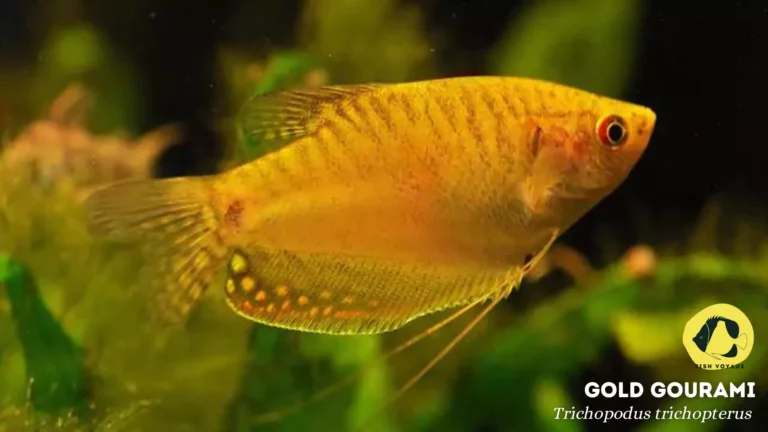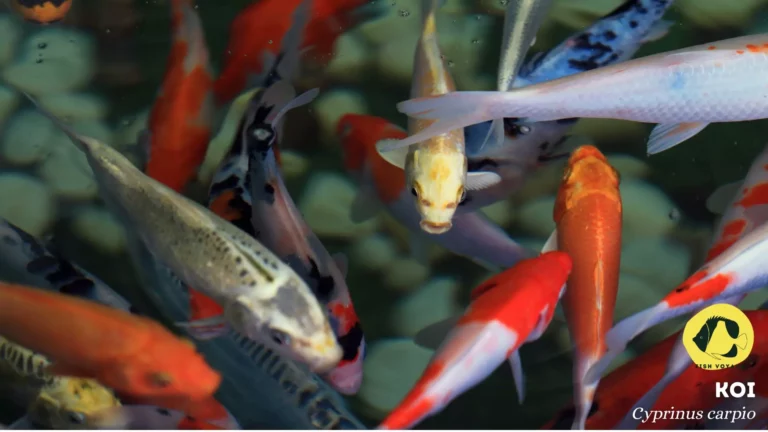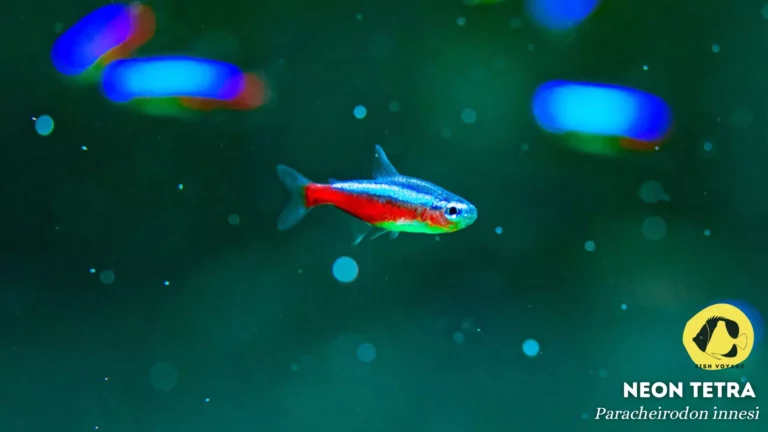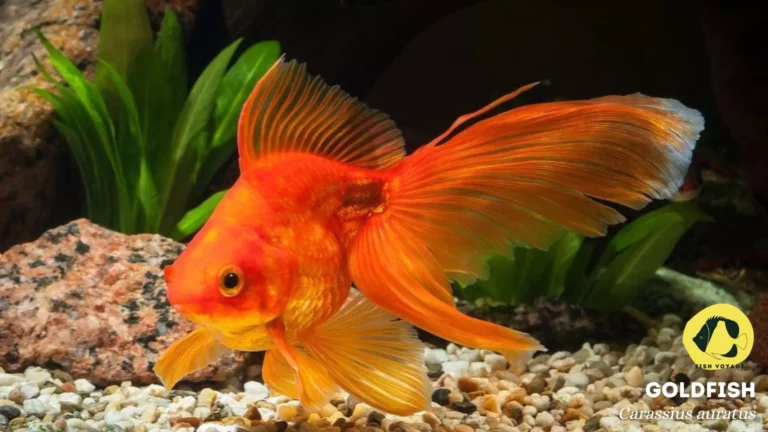The Ultimate Guide to Pygmy Corydoras Tank Size
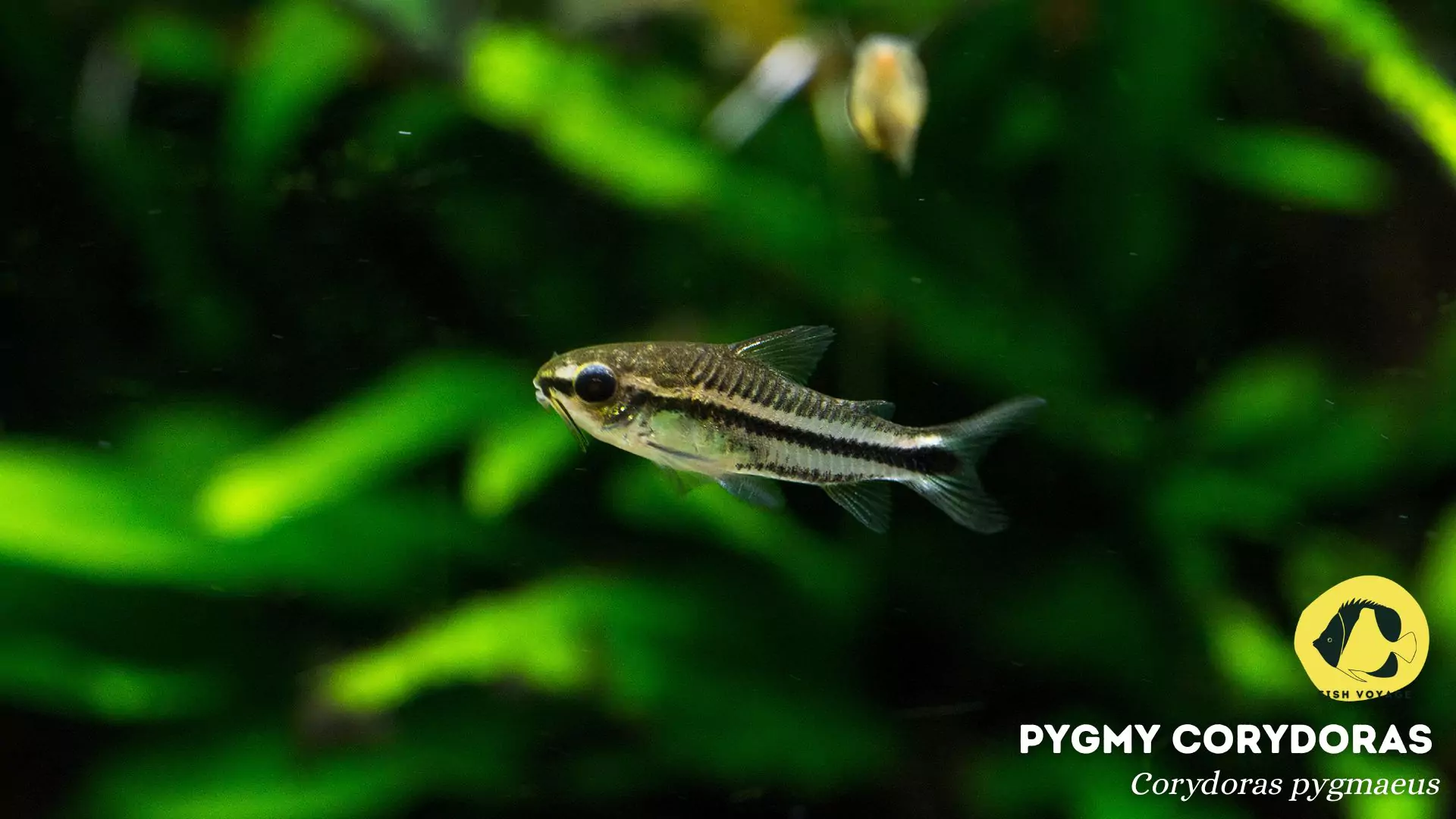
Welcome to the fascinating world of aquarium enthusiasts! If you’re considering adding Pygmy Corydoras to your aquatic family, you’re in for a delightful experience. Pygmy Corydoras, with their charming demeanor and small stature, have secured a special place in the hearts of fishkeeping enthusiasts. These petite members of the catfish family bring a sense of vitality and community to your aquarium. However, as endearing as these creatures are, ensuring their well-being is paramount.
One crucial aspect that often determines their health and happiness is the size of their habitat. In this guide, we delve into the significance of providing an appropriate tank size for Pygmy Corydoras, shedding light on the key considerations that contribute to their optimal living conditions. Because, just like any cherished companions, these aquatic wonders thrive when their environment is thoughtfully tailored to meet their unique needs. Let’s explore the world of Pygmy Corydoras and uncover the secrets to a thriving aquatic haven.
Understanding Pygmy Corydoras
Distinct Characteristics
Pygmy Corydoras, scientifically known as Corydoras pygmaeus, are miniature marvels renowned for their diminutive size, typically reaching around 1 inch in length. Their sleek, streamlined bodies feature a striking silver coloration with a distinctive black stripe running from head to tail.
Social Behavior
These communal creatures thrive in groups, displaying a remarkable social dynamic within the aquarium community. Their engaging behavior includes playful interactions and synchronized movements, creating a captivating spectacle for observers.
Bottom-Dwelling Nature
Pygmy Corydoras are primarily bottom-dwellers, often exploring the substrate in search of food particles. Their scavenging nature contributes to the overall cleanliness of the tank, making them valuable additions to any aquatic ecosystem.
Importance of Proper Tank Size
The tank size plays a pivotal role in nurturing their natural instincts and behaviors. A well-sized aquarium provides ample space for Pygmy Corydoras to forage, swim, and engage in social activities. Inadequate tank dimensions can lead to stress, hindering their overall well-being and potentially impacting their longevity.
Need for Adequate Swimming Space
Pygmy Corydoras, despite their small size, appreciate open areas for swimming. A sufficiently spacious tank allows them to navigate freely and exhibit their natural behaviors, fostering a healthier and more vibrant environment.
Tank Mates and Hierarchy
Understanding the social hierarchy within Pygmy Corydoras groups is crucial. A well-sized tank accommodates their social structure, minimizing conflicts and promoting harmonious cohabitation with other compatible tank mates.
In summary, comprehending the distinctive characteristics and behaviors of Pygmy Corydoras underscores the importance of an appropriately sized tank. By aligning their living space with their natural tendencies, aquarium enthusiasts can create an environment that not only caters to their physical needs but also enhances the overall aesthetic and interactive appeal of the aquatic setting.
Factors Influencing Tank Size
Water Parameters
- Ideal Water Conditions: Pygmy Corydoras thrive in stable and well-maintained water conditions. A spacious tank provides a more stable environment, reducing the likelihood of rapid parameter fluctuations. Maintain a temperature range of 72-78°F (22-26°C) and ensure a pH level between 6.5 and 7.5 to support their health and vitality.
- Impact on Water Quality: The size of the aquarium directly influences water quality. In a larger tank, the dilution effect is more pronounced, helping to disperse waste and maintain optimal water parameters. Adequate filtration becomes more effective, ensuring a cleaner and healthier habitat for Pygmy Corydoras.
Social Behavior
- Need for Space: Pygmy Corydoras are social creatures that thrive in the company of their kind. In a spacious tank, they can form cohesive groups, engaging in natural social behaviors such as schooling and playful interactions. Insufficient space can lead to territorial disputes and increased stress, negatively affecting their overall well-being.
- Enhancing Happiness: A well-sized tank not only accommodates their physical space requirements but also contributes to their mental well-being. The freedom to explore, swim, and interact fosters a happier and more contented community of Pygmy Corydoras, showcasing their vibrant personalities.
Compatibility
- Consideration for Tank Mates: When selecting tank mates for Pygmy Corydoras, the tank size becomes a crucial factor. A larger tank provides ample space for diverse species, reducing the likelihood of territorial conflicts. This is particularly important as Pygmy Corydoras are known for their peaceful nature.
- Promoting Harmonious Communities: In a well-sized aquarium, the establishment of a harmonious community is more achievable. The spacing allows for the coexistence of Pygmy Corydoras with other compatible fish, creating a visually appealing and balanced aquatic ecosystem.
In conclusion, the dimensions of the tank play a multifaceted role in the well-being of Pygmy Corydoras. From maintaining optimal water conditions to supporting their social dynamics and fostering compatibility with tank mates, choosing the right tank size is instrumental in creating a thriving and harmonious environment for these captivating aquatic companions.
Minimum Tank Size Recommendations
Number of Pygmy Corydoras
- Individual Space Requirements: As a general guideline, allocate at least 5 gallons of water for every 5 to 6 Pygmy Corydoras. This ensures that each individual has sufficient space to roam, forage, and express natural behaviors. Overcrowding can lead to stress and compromise their overall health.
- Consideration for Group Dynamics: For optimal social interactions, it is recommended to keep Pygmy Corydoras in groups of six or more. In a larger tank, consider increasing the number of individuals to maintain a cohesive and harmonious school.
Size of the Aquarium
- Minimum Tank Size: A 10 to 15-gallon aquarium is generally considered suitable for a small community of Pygmy Corydoras. This provides ample swimming space and allows for the establishment of a thriving environment.
- Expert Opinions: Some seasoned aquarists may suggest larger tank sizes, such as a 20-gallon long aquarium, to enhance the well-being of Pygmy Corydoras. While they can adapt to smaller setups, a more spacious tank allows for better water quality management and increased freedom of movement.
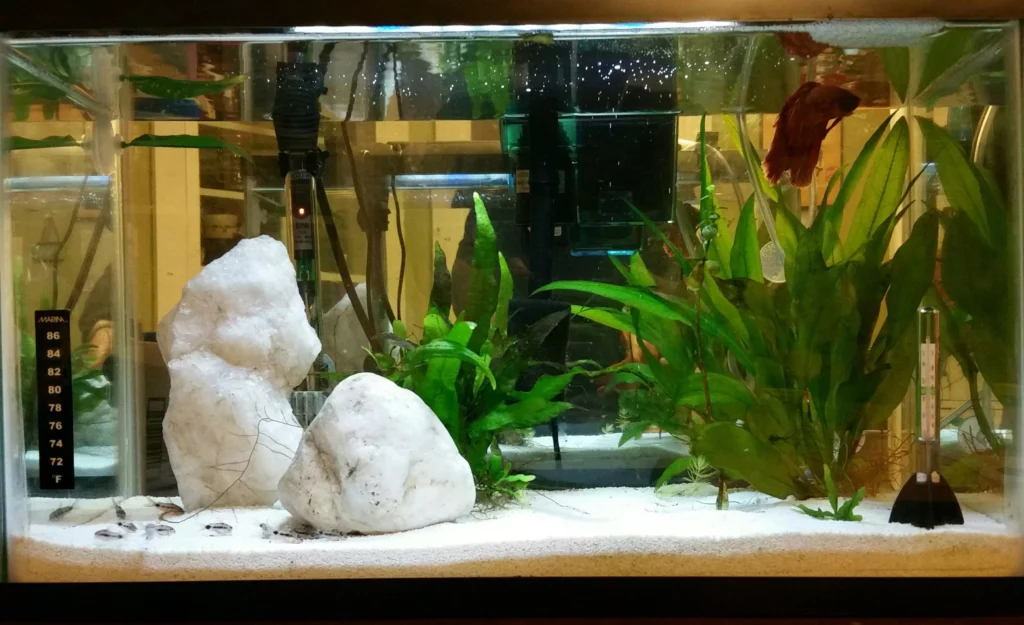
Tank Setups and Variations
- Aquascaping Considerations: The presence of live plants, suitable hiding spots, and a well-designed substrate layout can contribute to the overall comfort of Pygmy Corydoras. In a larger tank, you have more flexibility in creating an enriched environment with diverse aquatic features.
- Specialized Tanks: In cases where the focus is on creating a biotope setup or replicating specific natural conditions, experts might recommend larger tanks to accommodate both Pygmy Corydoras and additional elements like plants, driftwood, or specific water flow patterns.
In summary, the minimum tank size recommendations for Pygmy Corydoras are contingent upon the number of individuals and their size, with considerations for expert opinions and specific tank setups. Striking a balance between providing adequate space for the fish and creating a visually appealing aquatic environment ensures a fulfilling and thriving habitat for these charming aquatic companions.
Setting Up the Ideal Tank
Substrate and Decor
- Substrate Choice: Opt for a fine-grained substrate, such as sand or smooth gravel, to mimic the natural riverbed environment where Pygmy Corydoras are commonly found. This substrate is gentle on their barbels and allows for natural foraging behavior.
- Decor Elements: Incorporate driftwood, smooth rocks, and caves to provide hiding spots and break up sightlines. These decorations not only create a visually appealing tank but also contribute to the mental well-being of Pygmy Corydoras by offering shelter and security.
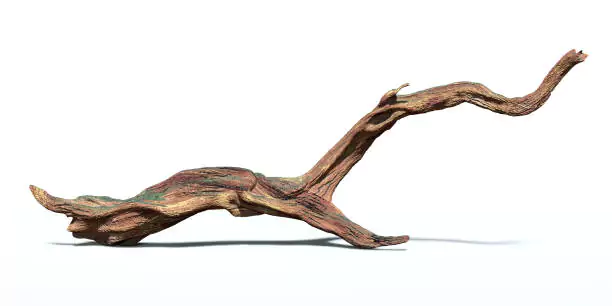
Plants
- Importance of Live Plants: Live plants play a pivotal role in enhancing the overall well-being of Pygmy Corydoras. They mimic the natural habitat, provide oxygen, and act as natural filtration. Consider species like Java Moss, Anubias, or Amazon Sword, which are well-suited for both the fish and the aquarium ecosystem.
- Cover and Exploration: Live plants offer cover for Pygmy Corydoras, reducing stress levels. Additionally, the presence of plants encourages them to explore and engage in their natural behaviors, contributing to a more dynamic and vibrant aquarium.
Aquascaping Considerations
- Creating Varied Heights: Vary the height of plants and decorations to cater to Pygmy Corydoras’ preference for different depths in their environment. This allows them to utilize the entire tank space, promoting natural exploration and activity.
- Balancing Open Spaces: While providing ample hiding spots, ensure open spaces for swimming. Pygmy Corydoras appreciates areas with minimal obstacles for unhindered movement, promoting a more natural and stress-free environment.
Maintenance and Considerations
- Routine Cleaning: Regularly clean the substrate to remove debris and maintain water quality. Gentle siphoning during water changes helps prevent the accumulation of waste and detritus.
- Avoid Sharp Edges: When selecting decor items, ensure they have smooth edges to prevent injury to the delicate barbels of Pygmy Corydoras. Smooth, rounded decorations contribute to their safety and well-being.
In conclusion, setting up the ideal tank for Pygmy Corydoras involves thoughtful choices in substrate, decor, and live plants. By replicating their natural habitat and providing a well-balanced environment, you not only create a visually appealing aquarium but also ensure the physical and mental well-being of these charming aquatic companions.
Maintenance and Cleaning
Regular Water Testing
- Importance of Monitoring: Regularly test water parameters using a reliable aquarium test kit. This helps you stay informed about crucial factors such as pH, ammonia, nitrite, and nitrate levels. Consistent monitoring allows for timely adjustments and ensures a stable environment for Pygmy Corydoras.
- Frequency of Testing: Aim for weekly water tests, especially during the initial stages of tank setup. Adjustments can be made promptly, preventing potential stress or health issues for your aquatic companions.
Substrate Cleaning
- Gentle Siphoning: Perform routine substrate cleaning to remove uneaten food, debris, and waste. Use a gentle siphon to avoid disrupting the substrate and harming the Pygmy Corydoras. This practice contributes to a cleaner and healthier habitat.
- Focus on Troublesome Areas: Pay close attention to areas around decorations and plants where debris may accumulate. By targeting specific zones during cleaning, you ensure a thorough maintenance routine without causing unnecessary disturbance.
Water Changes
- Regular Partial Water Changes: Schedule regular partial water changes to maintain optimal water quality. A 20-25% water change every 1 to 2 weeks helps dilute accumulated toxins and replenishes essential minerals, promoting the overall well-being of Pygmy Corydoras.
- Use Dechlorinated Water: Always use dechlorinated water for water changes to eliminate harmful chlorine and chloramines. This ensures that the replacement water is safe for your Pygmy Corydoras.
Filter Maintenance
- Consistent Filter Checks: Regularly inspect and clean the aquarium filter according to the manufacturer’s recommendations. A well-maintained filter ensures efficient biological and mechanical filtration, contributing to water clarity and quality.
- Avoid Complete Filter Changes: While it’s essential to clean the filter media, avoid replacing all the filter media at once. Maintaining some established media preserves beneficial bacteria colonies crucial for a stable aquarium environment.
Aquarium Glass and Decor Cleaning
- Algae Control: Address algae growth on aquarium glass and decor promptly. Use an algae scraper or sponge to gently clean surfaces, avoiding sudden movements that may startle or stress Pygmy Corydoras.
- Inspect and Adjust Decor: During cleaning sessions, inspect decor items for any signs of wear or sharp edges. Make adjustments as needed to ensure the safety of your fish.
By incorporating these maintenance practices into your routine, you not only foster a pristine environment for Pygmy Corydoras but also create a sustainable and thriving aquatic ecosystem. Regular care and attention contribute to the longevity and well-being of these captivating aquatic companions.
Troubleshooting Common Issues
Overcrowding
- Identifying Signs: Recognize signs of overcrowding, such as increased stress, erratic behavior, or potential aggression among Pygmy Corydoras. Overcrowding can lead to compromised water quality and hinder the well-being of your aquatic community.
- Solution: Assess the current tank size and the number of inhabitants. If overcrowding is evident, consider upgrading to a larger tank to provide more space for Pygmy Corydoras to move and interact. Maintaining an appropriate fish-to-space ratio is crucial for their health and overall happiness.
Aggression Among Tank Mates
- Observing Behavioral Changes: Monitor the social dynamics within the aquarium, especially if aggressive behaviors are observed. Aggression may lead to stress, injuries, or dominance issues among Pygmy Corydoras or with other tank mates.
- Solution: Introduce additional hiding spots and visual barriers to break line of sight and reduce aggression. Ensure that the tank mates are compatible in terms of size, temperament, and water parameters. If necessary, consider rehoming or separating aggressive individuals to create a more harmonious environment.
Stress Indicators
- Recognizing Stress Signs: Be vigilant for stress indicators like reduced activity, hiding, or changes in coloration. Stress in Pygmy Corydoras can result from various factors, including inadequate tank size, incompatible tank mates, or suboptimal water conditions.
- Solution: Address the root causes of stress by optimizing the tank environment. Ensure water parameters are within the recommended range, provide suitable tank mates, and adhere to proper maintenance practices. The introduction of calming elements like additional plants or decor can also alleviate stress.
Water Quality Issues
- Identifying Water Quality Problems: Watch for signs of poor water quality, such as cloudiness, unusual odors, or elevated ammonia or nitrite levels. Suboptimal water conditions can have detrimental effects on the health of Pygmy Corydoras.
- Solution: Perform regular water tests and adhere to a consistent maintenance schedule. Adjust filtration, increase water changes, and address any issues promptly. Maintaining pristine water quality is paramount for the well-being of Pygmy Corydoras.
Dietary Concerns
- Observing Feeding Behaviors: Pay attention to the feeding habits of Pygmy Corydoras. Competition for food, inadequate nutrition, or overfeeding can lead to health issues.
- Solution: Provide a varied and balanced diet that includes high-quality sinking pellets or flakes suitable for bottom-dwelling fish. Ensure that each Pygmy Corydoras receives sufficient food by spreading the feeding locations or using feeding rings.
By proactively addressing these common issues, you can create a thriving and healthy community for your Pygmy Corydoras. Regular observation, strategic problem-solving, and a commitment to optimal care contribute to the overall success of your aquarium.
Conclusion
In crafting the ideal habitat for Pygmy Corydoras, the significance of an appropriately sized tank cannot be overstated. As we’ve explored the nuances of tank size and its impact on the well-being of these charming aquatic companions, several key takeaways emerge.
Adequate tank size is fundamental to the health and happiness of Pygmy Corydoras. Providing sufficient space allows them to exhibit natural behaviors, engage in social interactions, and navigate their environment with ease. A well-sized tank promotes social harmony among Pygmy Corydoras, fostering a cohesive and dynamic community. Compatibility with tank mates is enhanced, reducing the likelihood of conflicts and contributing to a visually captivating aquatic ecosystem. Thoughtful tank setup, including suitable substrate, decor, and live plants, adds a layer of environmental enrichment. This not only satisfies their instinctual needs but also elevates the aesthetic appeal of the aquarium. Regular maintenance practices, from water testing and substrate cleaning to routine water changes, play a crucial role in sustaining optimal conditions. A well-maintained tank ensures a healthy and thriving environment for Pygmy Corydoras.
As stewards of these aquatic environments, we hold the responsibility to provide the best possible conditions for our Pygmy Corydoras. By prioritizing their needs, considering the recommendations for tank size, and addressing potential issues promptly, we contribute to the longevity and well-being of these beloved aquatic companions.
In closing, let us embark on a journey of continuous learning and improvement in our fishkeeping endeavors. Your commitment to creating a nurturing environment for Pygmy Corydoras not only enriches their lives but also brings joy and fulfillment to your own. As you embark on this aquatic adventure, may your tanks be vibrant, your Pygmy Corydoras flourish, and your passion for responsible fishkeeping thrive.
Additional Resources
Reputable Forums for Further Information
- Aquarium Advice Forum: Engage with a community of experienced aquarists on Aquarium Advice Forum. Share your insights, seek advice, and participate in discussions related to Pygmy Corydoras care and tank management.
- Fishlore Community: Join the Fishlore Community, a hub of knowledge where aquarists from all levels of expertise come together. Explore dedicated threads on Pygmy Corydoras and gain valuable insights from seasoned hobbyists.
Reputable Books for Further Reading
- The Complete Idiot’s Guide to Freshwater Aquariums by Mike Wickham: Delve into the fundamentals of freshwater aquarium keeping with this comprehensive guide. From tank setup to species-specific care, including Pygmy Corydoras, this book serves as a valuable resource for both beginners and seasoned hobbyists.
- Corydoras Catfish by Warren E. Burgess: Explore an in-depth guide specifically dedicated to Corydoras catfish, including Pygmy Corydoras. Authored by experts in the field, this book provides detailed insights into their biology, behavior, and optimal care.
By utilizing these reputable forums, books, and online resources, you’ll have access to a wealth of information and community support to enhance your understanding of Pygmy Corydoras care. Remember to approach each source critically and tailor the information to your specific aquarium setup and goals. Happy fishkeeping!
Frequently Asked Questions (FAQs)
1. What is the minimum tank size recommended for Pygmy Corydoras?
The recommended minimum tank size for Pygmy Corydoras is generally around 10 to 15 gallons. This provides sufficient space for a small community, allowing them to express natural behaviors and fostering a healthy environment.
2. Can Pygmy Corydoras be kept in a smaller tank if they are the only inhabitants?
While Pygmy Corydoras are small in size, it’s essential to avoid excessively small tanks. Even in a setup with only Pygmy Corydoras, a minimum tank size of 10 gallons is recommended to ensure proper swimming space and maintain water quality.
3. How many Pygmy Corydoras can I keep in a 10-gallon tank?
In a 10-gallon tank, it’s advisable to keep a small group of Pygmy Corydoras, ideally around 5 to 6 individuals. This allows for social interactions and creates a cohesive community within the aquarium.
4. Can Pygmy Corydoras thrive in larger tanks, and what are the benefits?
Yes, Pygmy Corydoras can thrive in larger tanks, and there are several benefits to providing more space. In a larger aquarium, they have increased swimming room, reduced competition for territory, and a generally more stable environment due to the dilution effect on waste.
5. How does tank size affect the behavior of Pygmy Corydoras?
Tank size significantly influences the behavior of Pygmy Corydoras. In an appropriately sized tank, they exhibit more natural behaviors, such as schooling and exploration. A larger tank also minimizes stress, promotes social harmony, and allows for a more enriched and dynamic aquatic environment.

